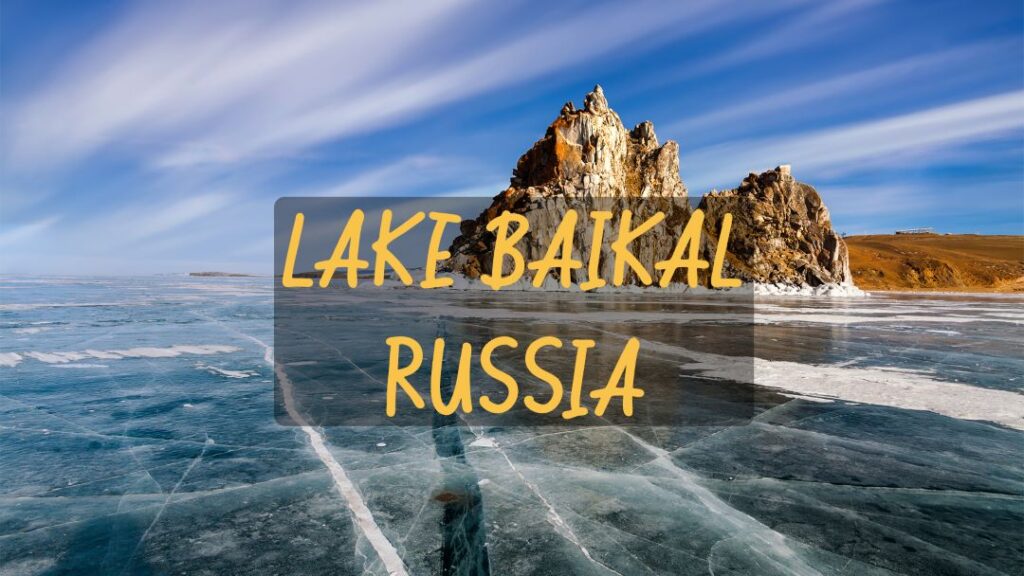Lake Baikal, located in Siberia, Russia, is one of the world’s most remarkable natural wonders. Known as the “Pearl of Siberia,” it is the deepest and oldest freshwater lake on the planet. The lake is around 25 million years old and reaches depths of 1,642 meters (5,387 feet). It holds about 20% of the world’s unfrozen freshwater, making it a vital resource.
Baikal is also home to an extraordinary variety of plant and animal life. There are over 1,700 species of plants and animals in the lake, and two-thirds of them cannot be found anywhere else in the world. The most famous resident is the Baikal seal, also known as the nerpa, which is unique to this lake.
Tourists flock to Lake Baikal year-round to experience its natural beauty and outdoor activities. In summer, visitors can enjoy hiking, boat tours, and fishing. In winter, the frozen lake offers opportunities for ice skating, ice fishing, and snowmobiling. The ice formations and transparent ice are particularly breathtaking during this season.
The lake’s water is crystal clear, and visibility can extend to 40 meters (131 feet) in some areas. This purity is due to a combination of the lake’s depth, its unique ecosystem, and the presence of a specific type of sponge that filters impurities. The clarity and cleanliness of the water contribute to the lake’s reputation as one of the world’s most pristine bodies of water.
Lake Baikal is not only a natural wonder but also a UNESCO World Heritage Site. Its stunning landscapes, rich biodiversity, and cultural significance make it a must-visit destination for nature lovers and adventure seekers alike.
How to Spend Time in Lake Baikal?
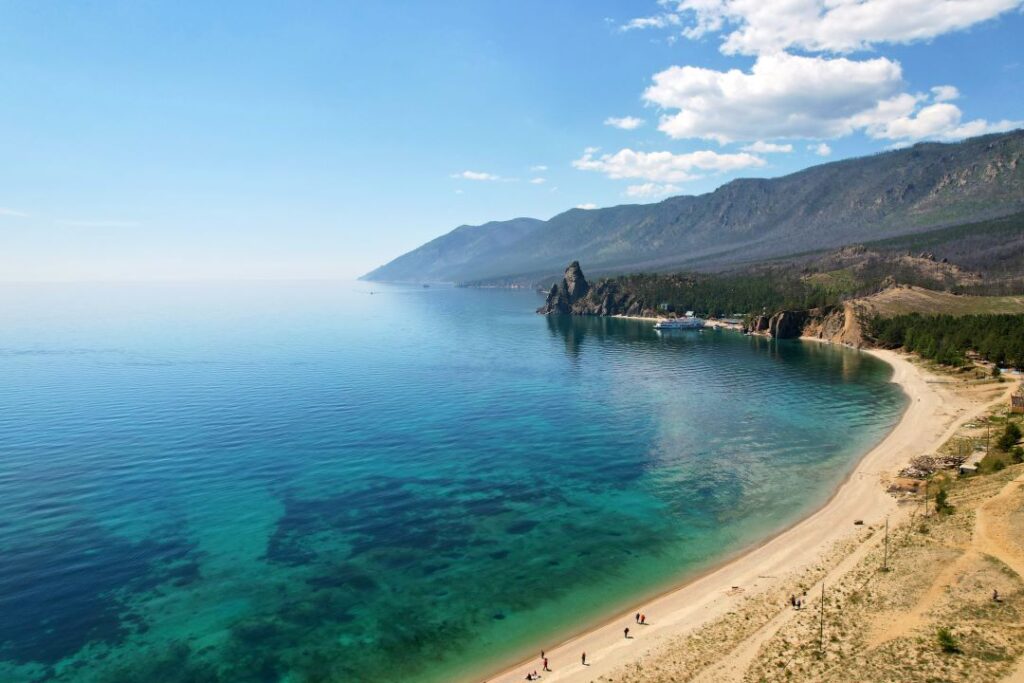
Spending time at Lake Baikal offers a wide range of activities depending on the season. In the summer, you can explore the scenic hiking trails that surround the lake, offering breathtaking views and a chance to encounter unique wildlife.
Boat tours are popular, allowing you to see the beauty of the lake from the water and visit the small islands dotting its surface. Fishing is another enjoyable summer activity, as the lake is home to many fish species.
In winter, Lake Baikal transforms into a frozen wonderland. The thick ice that forms on the lake provides a perfect surface for ice skating and ice fishing. You can also experience dog sledding, snowmobiling, and even ice diving if you are adventurous.
One of the highlights of visiting Lake Baikal in winter is seeing the stunning ice formations and the clear, glass-like ice that allows you to see the depths below.
No matter the season, you can also visit local villages and learn about the culture and traditions of the people living around Lake Baikal. There are many hot springs in the area where you can relax and enjoy the natural warmth. With such a variety of activities, you will find plenty of ways to enjoy your time at Lake Baikal.
Why is Lake Baikal So Famous?
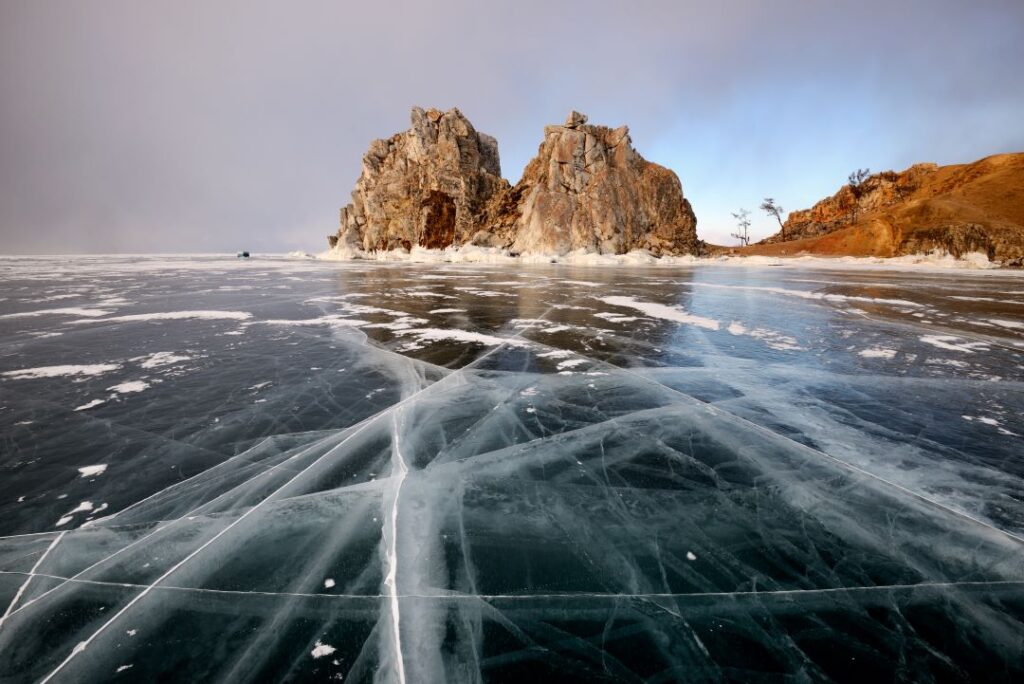
Lake Baikal is famous for several reasons. Firstly, it is the deepest and oldest freshwater lake in the world. Its age and depth make it a unique natural feature that attracts scientists and tourists alike. Secondly, Lake Baikal holds about 20% of the world’s unfrozen freshwater, which highlights its importance as a global freshwater resource.
Another reason for its fame is its biodiversity. Lake Baikal is home to thousands of species, many of which are found nowhere else on Earth. This includes the Baikal seal, the only freshwater seal species in the world.
The lake’s crystal-clear water, stunning natural scenery, and the unique cultural heritage of the surrounding area also contribute to its worldwide recognition. As a UNESCO World Heritage Site, Lake Baikal is recognized for its natural and cultural significance, drawing visitors from all over the world.
How Many Days Do You Need in Lake Baikal?
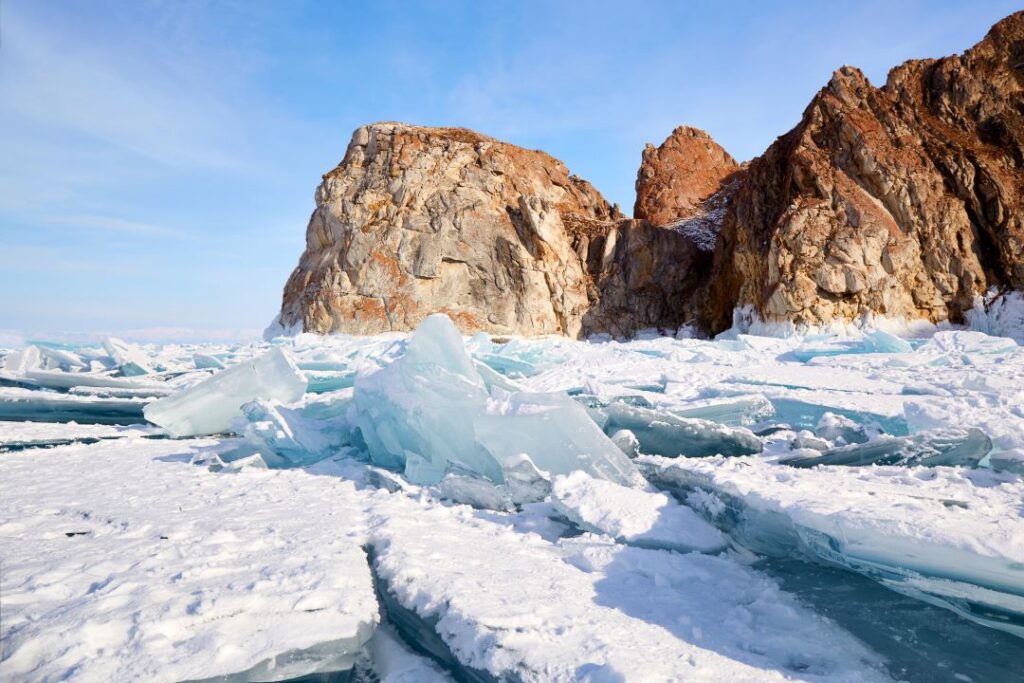
The number of days you need to fully experience Lake Baikal depends on your interests and the activities you wish to pursue. For a comprehensive visit, spending at least five to seven days is recommended. This allows you to explore different parts of the lake, engage in various activities, and truly appreciate the beauty and culture of the region.
In five to seven days, you can take boat tours, hike through the scenic trails, visit local villages, and even take a dip in the lake if you’re brave enough to handle the cold water.
If you visit in winter, this timeframe also allows you to enjoy winter sports like ice skating, snowmobiling, and ice fishing. With a week-long stay, you can immerse yourself in the natural beauty and rich cultural experiences that Lake Baikal offers.
Why is Baikal the Most Livable Lake?
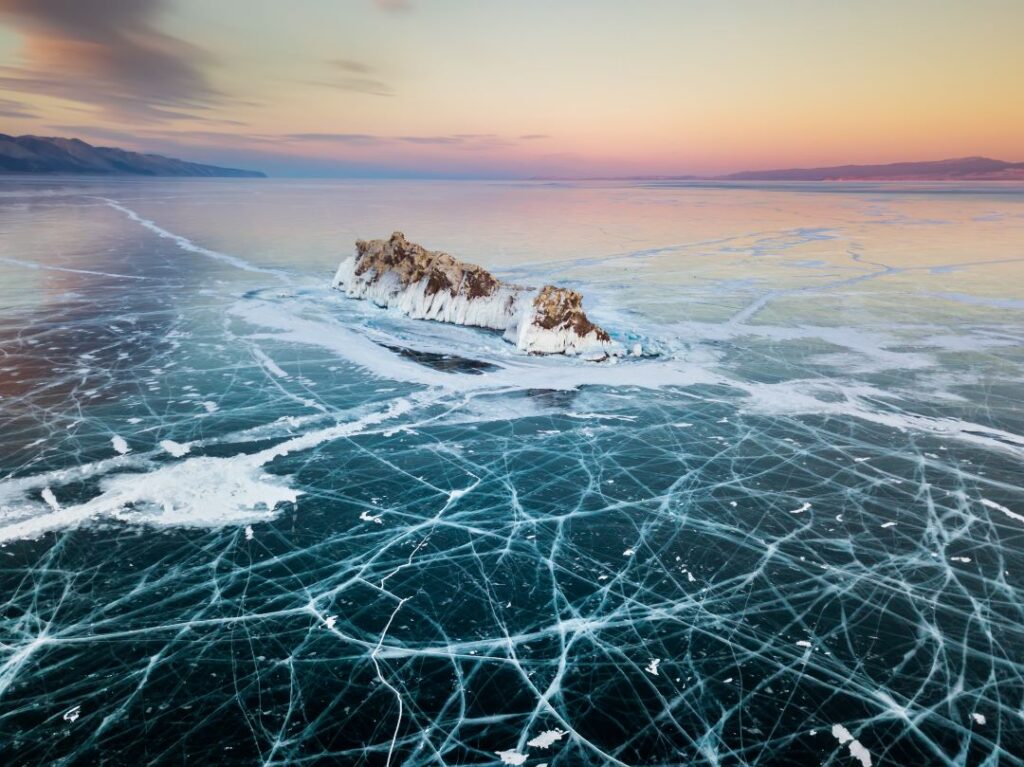
Lake Baikal is considered the most livable lake due to its exceptional water quality and rich biodiversity. The lake’s water is incredibly pure and supports a diverse array of life forms, including many species found nowhere else.
This pristine environment is maintained by the unique ecosystem within the lake, which includes organisms that help filter and clean the water naturally.
The surrounding area also supports a variety of plant and animal life, creating a vibrant and thriving habitat. The local communities around Lake Baikal have adapted to the lake’s environment, living in harmony with nature.
This balance between human life and the natural world makes Lake Baikal not only livable but also a prime example of a sustainable and biodiverse ecosystem.
Why Must You Visit Lake Baikal?
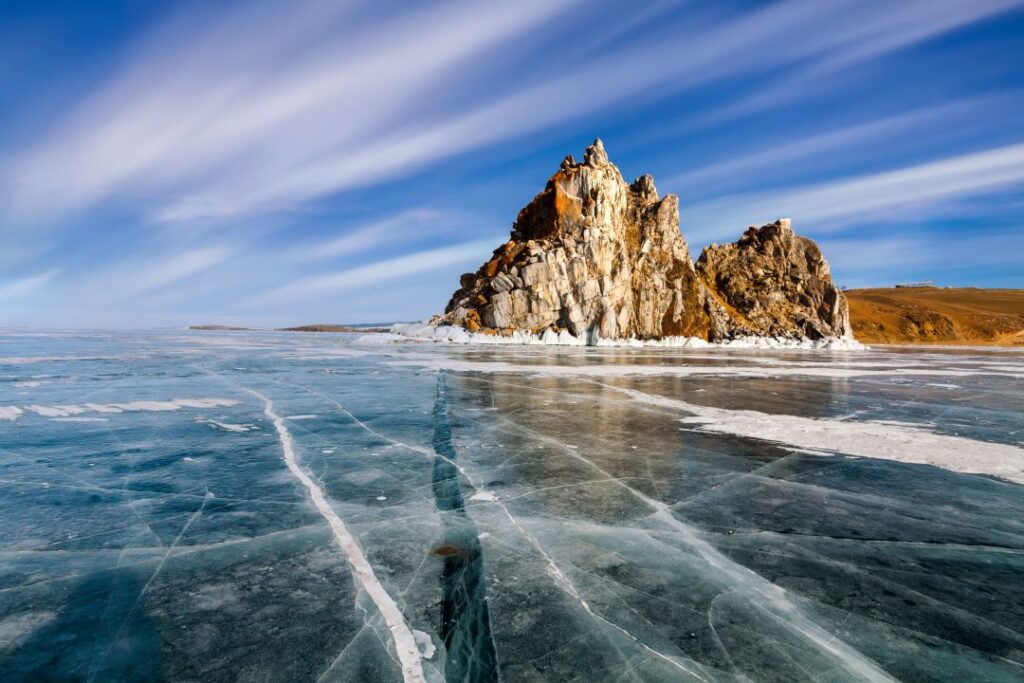
Visiting Lake Baikal offers a once-in-a-lifetime opportunity to experience one of the world’s most unique and beautiful natural wonders. The lake’s stunning landscapes, crystal-clear waters, and diverse wildlife provide endless opportunities for adventure and relaxation.
Whether you’re hiking through pristine forests, cruising on the lake’s serene waters, or marveling at the ice formations in winter, there’s something for everyone at Lake Baikal.
Additionally, the cultural heritage of the region is rich and fascinating. You can learn about the traditions and lifestyles of the local people, visit historic sites, and enjoy the hospitality of the communities around the lake. Lake Baikal’s combination of natural beauty and cultural richness makes it a must-visit destination for any traveler.
Where is Lake Baikal Located?
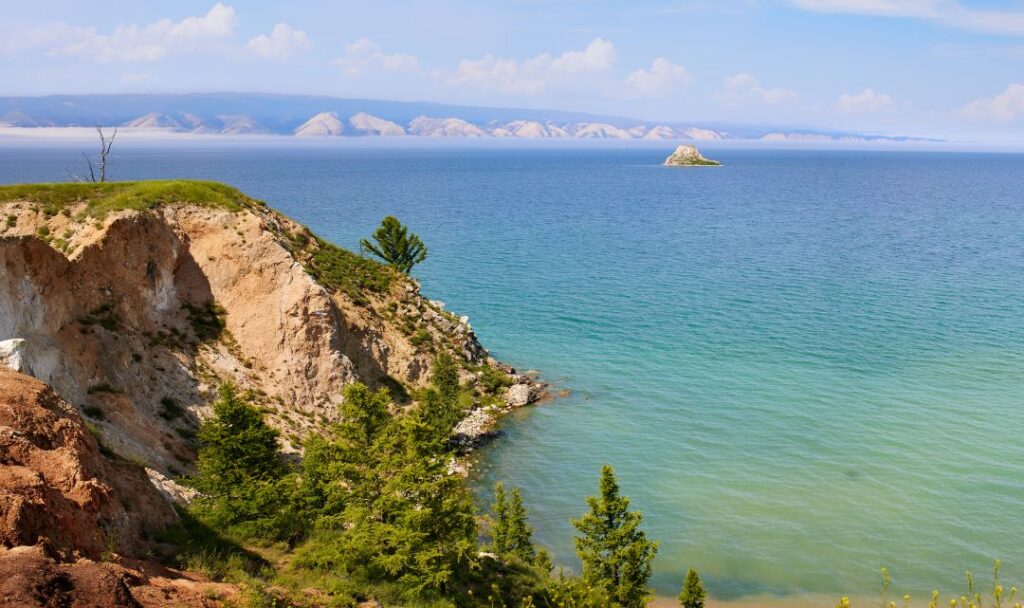
Lake Baikal is located in southern Siberia, Russia. It lies in the Irkutsk Oblast and Buryatia regions. The lake is situated between the city of Irkutsk to the northwest and the city of Ulan-Ude to the east.
It is easily accessible by train, as the Trans-Siberian Railway runs near the lake, providing a convenient way for visitors to reach this remote yet stunning destination.
What is the Best Month to Visit Lake Baikal?
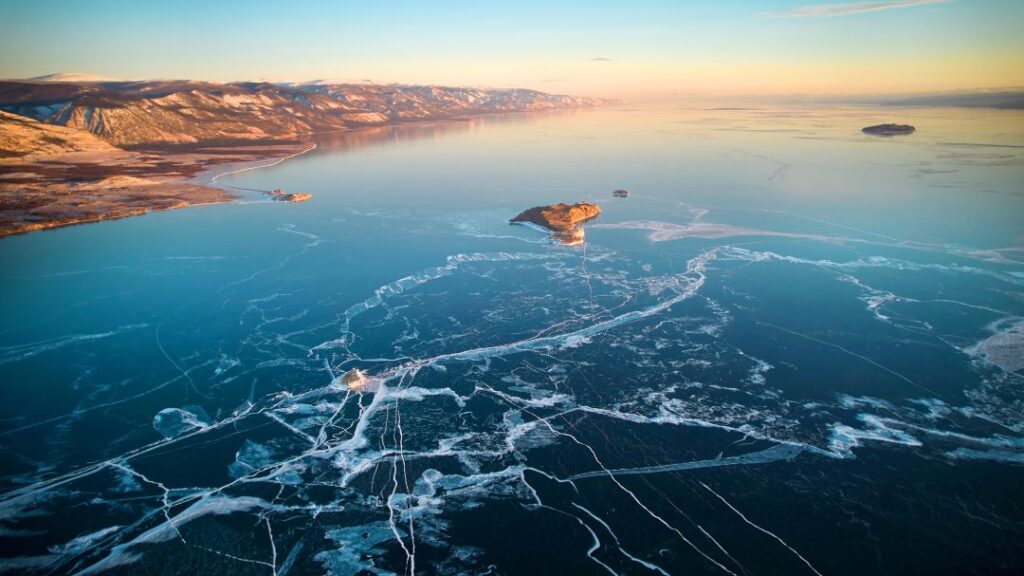
The best month to visit Lake Baikal depends on what you want to experience. For summer activities, July and August are ideal. During these months, the weather is warm, and the lake is accessible for hiking, boating, and fishing. The summer months also offer the best chance to see the lake’s diverse wildlife.
If you’re interested in winter activities, February and March are the best months to visit. The lake is fully frozen, and you can enjoy ice skating, ice fishing, and other winter sports. The ice is also at its clearest during these months, providing stunning views of the formations and the lake’s depths.
What Can I Do in Lake Baikal?
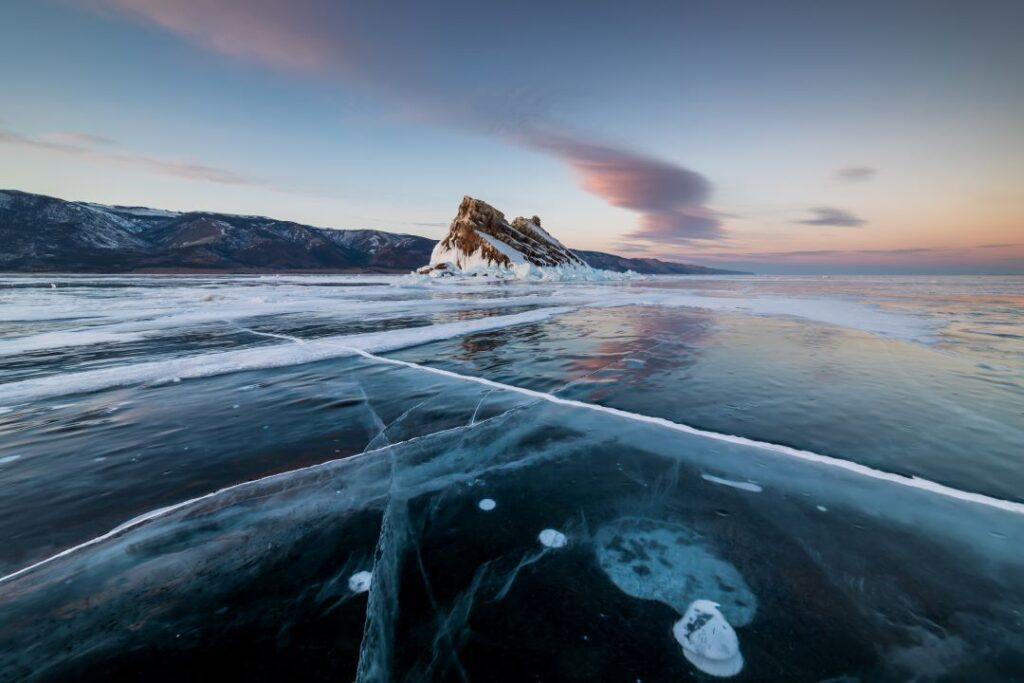
Lake Baikal offers a wide range of activities for visitors. In the summer, you can enjoy hiking, boating, fishing, and wildlife watching. The scenic trails around the lake provide breathtaking views and a chance to see unique plants and animals. Boat tours allow you to explore the lake’s vast expanse and visit its many islands.
In the winter, the frozen lake becomes a playground for ice skating, ice fishing, and snowmobiling. You can also try ice diving for a unique underwater experience. Throughout the year, you can visit local villages, experience the culture and traditions of the people living around the lake, and relax in natural hot springs.
Is Lake Baikal Worth Visiting?
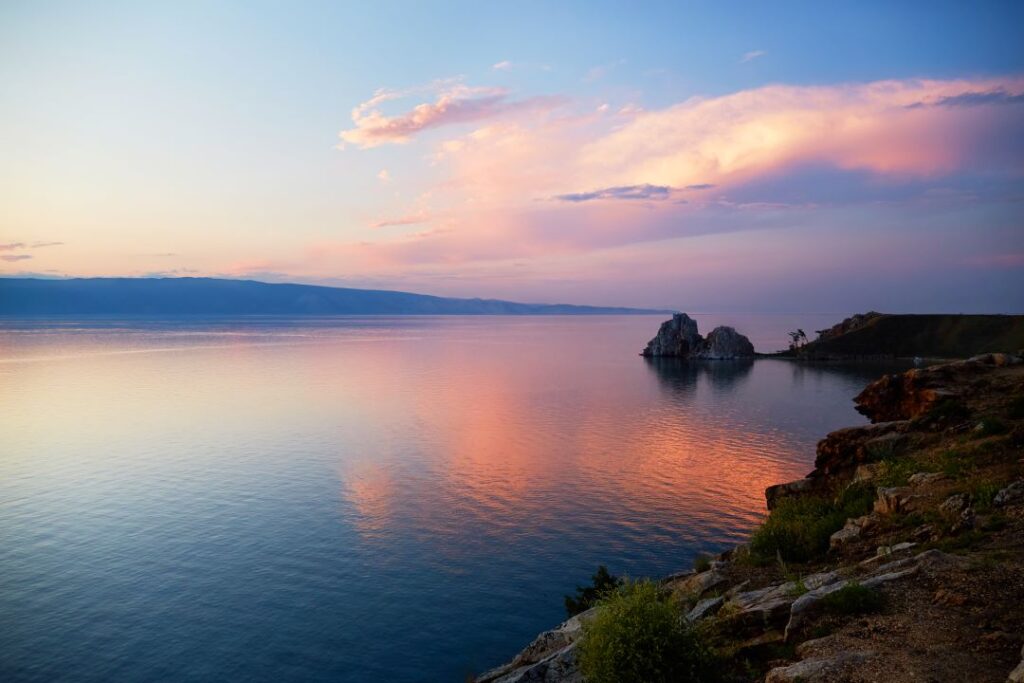
Absolutely, Lake Baikal is worth visiting. Its unique status as the deepest and oldest freshwater lake in the world, combined with its stunning natural beauty and rich biodiversity, makes it a top destination for nature lovers and adventure seekers.
The lake offers a wide range of activities throughout the year, from hiking and boating in the summer to ice skating and snowmobiling in the winter.
Additionally, the cultural experiences available in the surrounding villages provide a fascinating insight into the traditions and lifestyles of the local people. The combination of natural wonders and cultural richness makes Lake Baikal a truly unforgettable destination.
What is So Special About Lake Baikal?
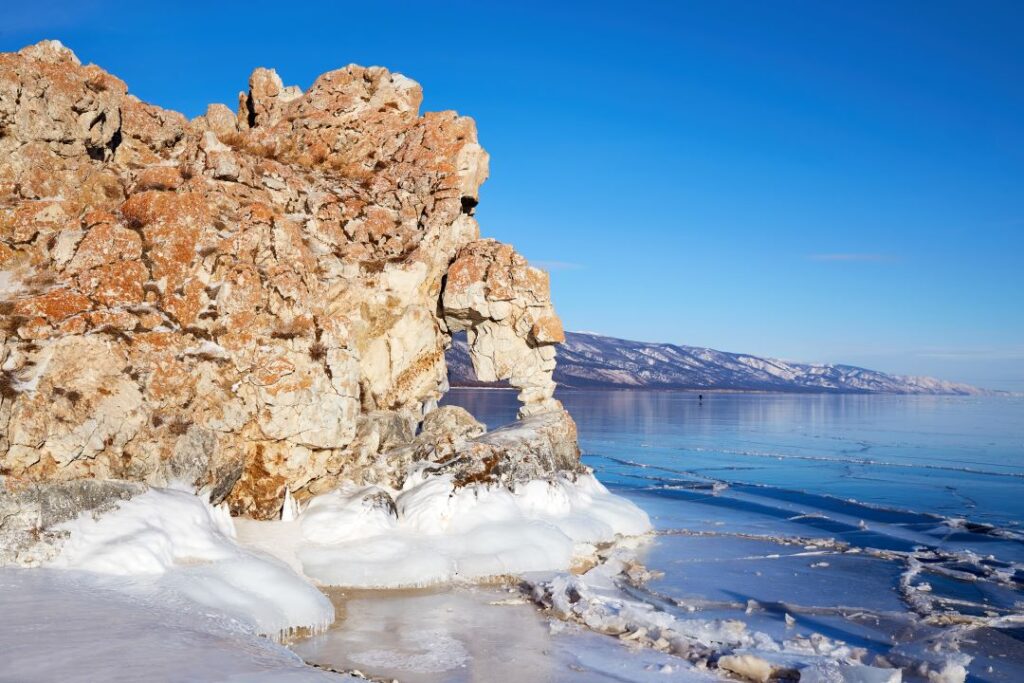
Lake Baikal is special for many reasons. It is the world’s deepest and oldest freshwater lake, with a unique ecosystem that supports thousands of species, many of which are found nowhere else.
The lake’s crystal-clear water is incredibly pure, providing excellent visibility and a pristine environment.
The surrounding landscape is breathtaking, with towering mountains, dense forests, and beautiful shorelines. The lake’s cultural significance is also noteworthy, as it is a UNESCO World Heritage Site and a vital part of the heritage of the local communities.
The combination of natural beauty, biodiversity, and cultural importance makes Lake Baikal truly special.
Can You Swim in Lake Baikal?
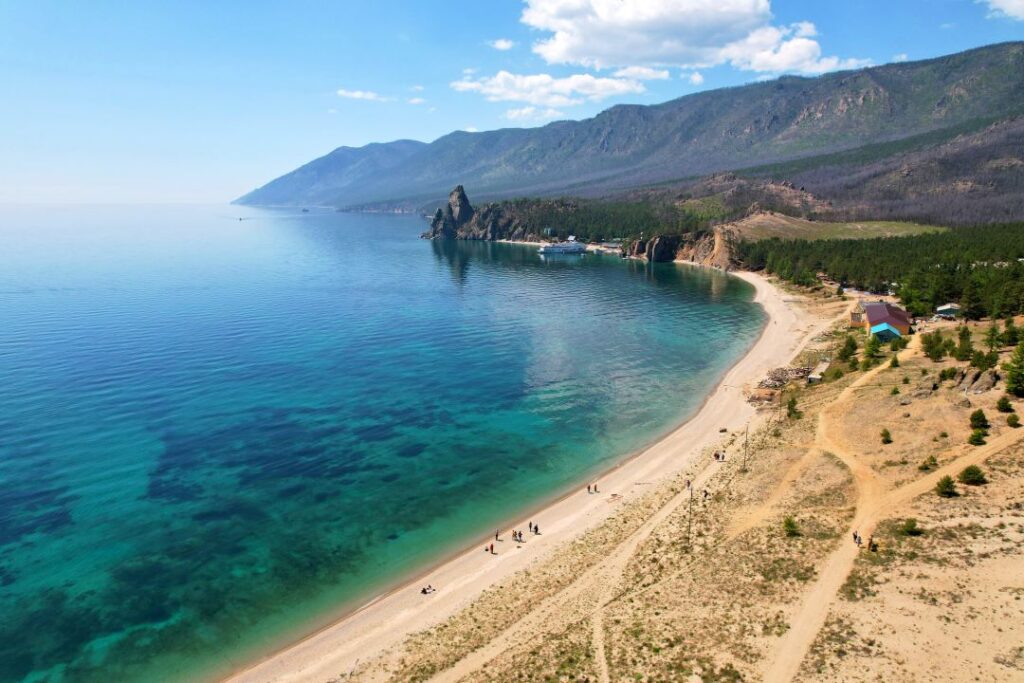
Yes, you can swim in Lake Baikal, but be prepared for cold water. Even in the summer, the water temperature remains quite chilly, averaging around 10-12°C (50-54°F). Only the bravest swimmers take a dip in the lake.
However, the experience is refreshing and invigorating, and swimming in the world’s deepest lake is a unique experience.
Is Lake Baikal in Siberia or Russia?
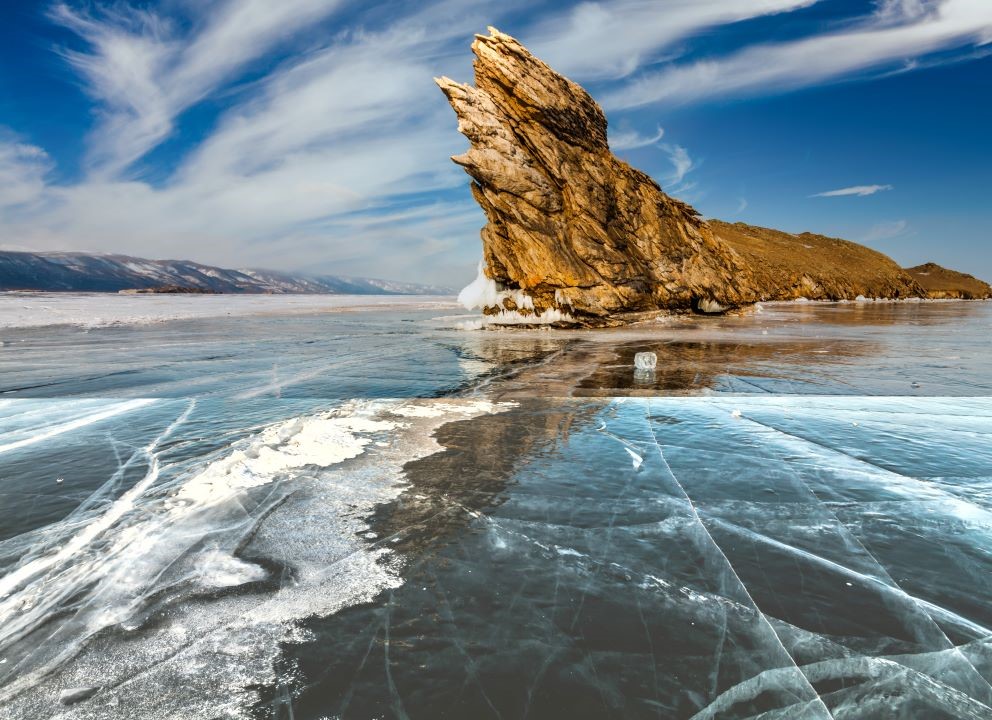
Lake Baikal is in both Siberia and Russia. It is located in the southern part of Siberia, within the Russian Federation. Specifically, the lake lies in the Irkutsk Oblast and Buryatia regions of Russia.
Why is Lake Baikal So Clean?
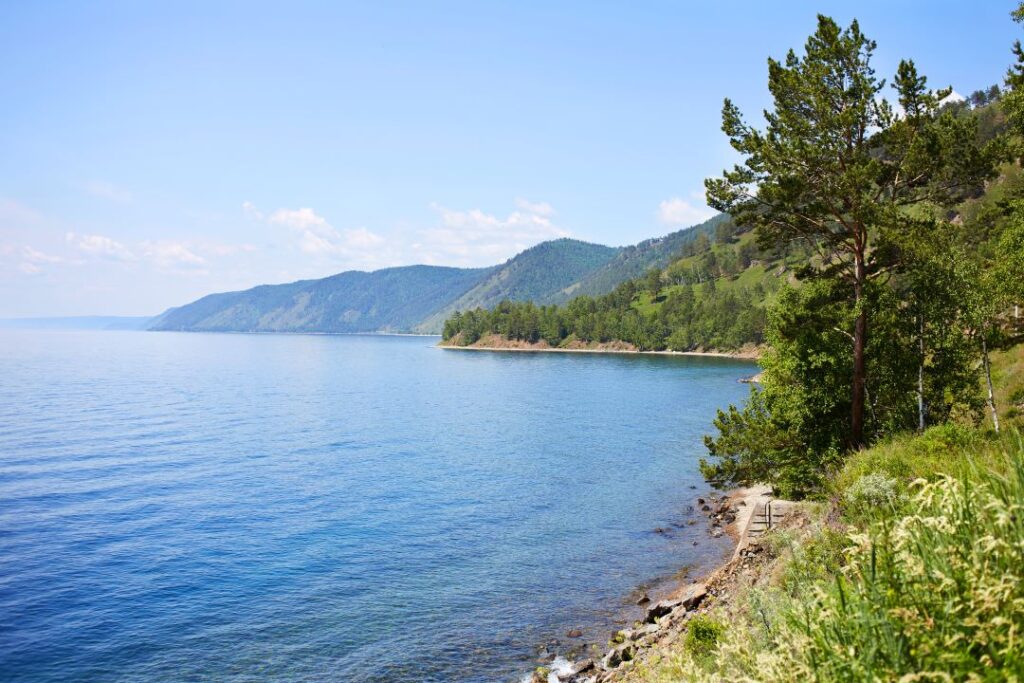
Lake Baikal’s water is incredibly clean due to several factors. The lake’s depth and large volume help dilute pollutants.
Additionally, the lake has a unique ecosystem that includes specific types of sponges and other organisms that naturally filter and purify the water. The lack of large-scale industrial development around the lake also helps maintain its cleanliness.
Is Lake Baikal Drinkable?
Yes, the water of Lake Baikal is drinkable. The lake’s water is one of the purest in the world, and in many areas, it is clean enough to drink directly. However, it is always recommended to purify natural water sources before drinking to ensure safety, especially if you are not used to the local microorganisms.
Is Lake Baikal Healthy?
Lake Baikal is considered healthy due to its clean water and thriving biodiversity. The lake supports a vast array of life forms, many of which are found nowhere else. The natural filtration systems within the lake, combined with its depth and volume, help maintain the water’s purity and overall health of the ecosystem.
The lake’s health is also supported by conservation efforts and its status as a UNESCO World Heritage Site, which helps protect it from pollution and environmental damage.
Conclusion
Lake Baikal, with its unparalleled natural beauty, exceptional biodiversity, and cultural significance, is a true wonder of the world. Its crystal-clear waters, rich wildlife, and diverse range of activities make it a must-visit destination for anyone seeking adventure and serenity.
Whether you explore its scenic trails, marvel at its winter ice formations, or immerse yourself in the local culture, Lake Baikal offers an unforgettable experience. Its pristine environment and the dedication to preserving this natural treasure ensure that Lake Baikal will remain a stunning destination for generations to come.

